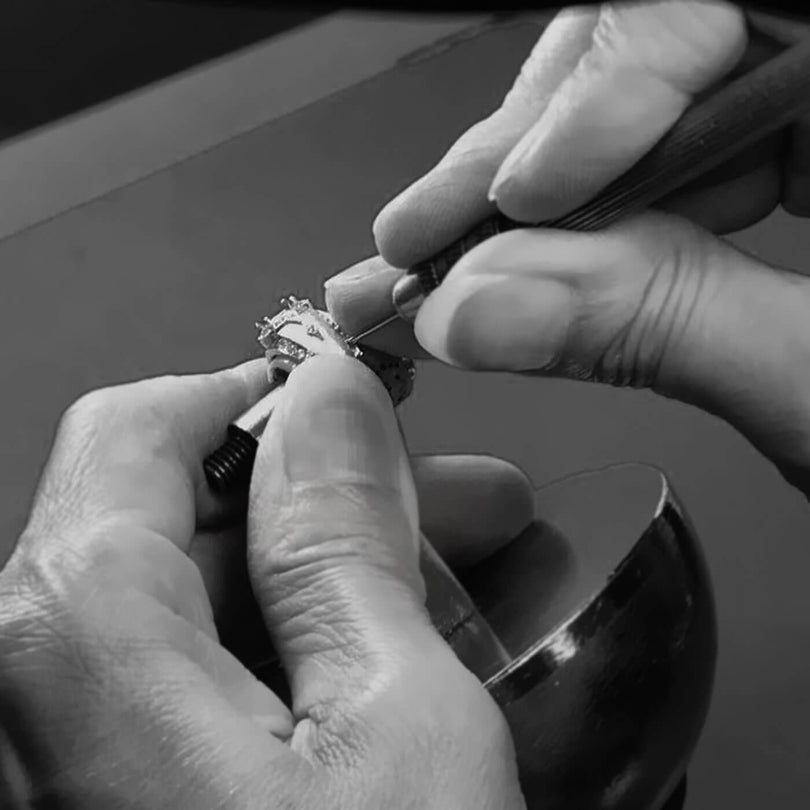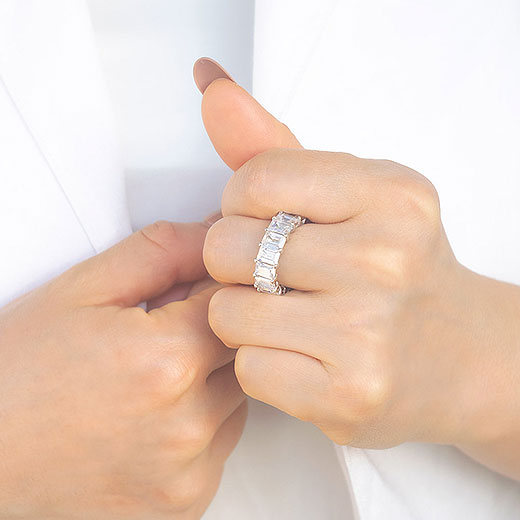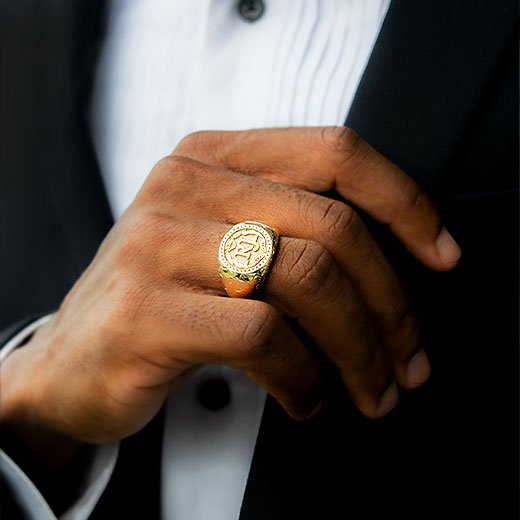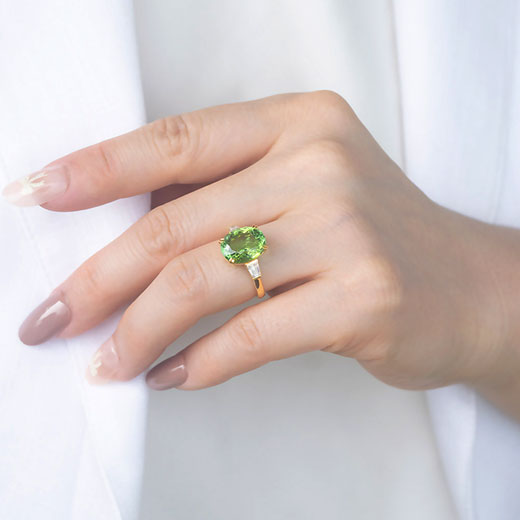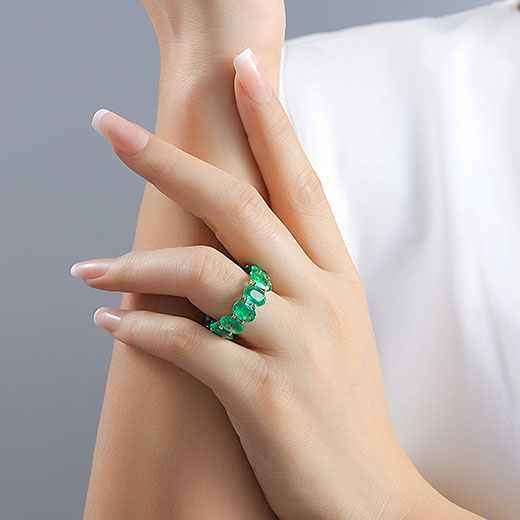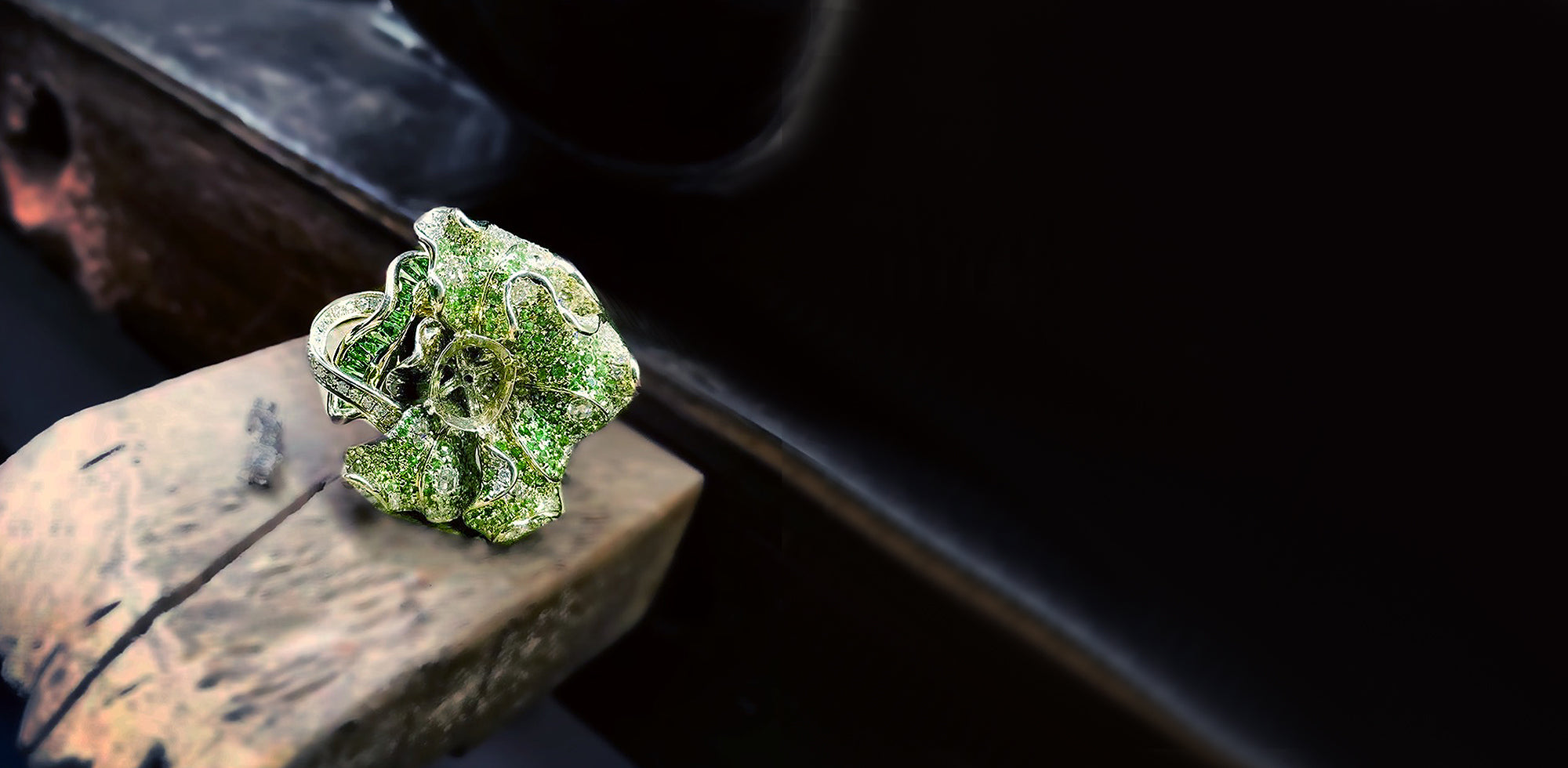OVERVIEW
Platinum is an extremely rare precious metal and is mainly utilized in manufacturing exquisite jewelry. Because of its heavyweights and endurance, Platinum is a metal that will not rust or wear away over time, unlike gold. When Platinum is used for prongs and other setting components, fine gemstones are held securely in place for the duration of the jewelry's life.
Platinum's natural white brilliance creates a rich backdrop for diamonds, and it can even make diamonds appear whiter than they are due to their reflective properties. In its own right, it's an attractive metal that can be used to produce jewelry that is either simply polished or embellished with engraved designs, depending on the style. In addition, the metal is stunning when combined with contrasting touches of 18K yellow gold.
There is no doubt that there are numerous advantages to choosing Platinum over white gold in jewelry. Nevertheless, how can you tell if your current jewelry is made of Platinum? The hallmarks or markings on your jewelry are the most straightforward way to determine the metal used to create it. All modern platinum jewelry must be stamped with metal content to be authentic.
Platinum Hallmarks
Jewelry can include varying percentages of pure Platinum depending on the design. A set of recommendations for appropriate marking standards for platinum jewelry marketed in the United States is published by the Federal Trade Commission (FTC).
The amount of pure Platinum contained in a piece of jewelry is typically expressed as a percentage of the total amount of Platinum. Consider the following scenario: you prepare a large bucket of fruit tea that contains 1,000 ounces of liquid, of which 900 hundred ounces are plain tea, and 100 ounces is fruit juice. As a result, the tea has 900 parts per thousand of your mixture—another way of saying that tea constitutes ninety percent of the total blend of ingredients.
The following are some essential platinum facts to remember when it comes to content markings:
It is permissible to mark or describe jewelry as "Platinum" if it contains at least 950 parts per thousand of pure Platinum.
The term "Plat" or "Pt" may be used to indicate that the jewelry is composed of 850, 900, or 950 parts per thousand of pure Platinum if a number is placed before the term to indicate how much pure Platinum is in the mix, such as "850 Plat" or "850 Pt," or "950 Plat" or "950 Pt."
It is permissible to mark jewelry as Platinum if it contains at least 950 parts per thousand of platinum group metals, with at least 500 parts per thousand of total pure Platinum, and if the percentages of each metal are disclosed. For example, "600 Pt. 350 Ir." or "600 Plat. 350 Irid." denotes 600 parts pure platinum and 350 parts iridium; "550Pt. 350Pd. 50Ir." or "550Plat. 350Pall. 50Irid." indicates 550 parts pure Platinum, 350 parts palladium, and 50 parts iridium; and "550Plat. 350Pall. 50Irid." denotes 550 parts pure Platinum, 350 parts palladium.
The Federal Trade Commission is currently considering a request to allow jewelry manufacturers to label their products as Platinum even if they contain metals that do not belong to the platinum group.
Metallurgical Grouping of Platinum-Group Metals
Acceptable alloys that can be used in conjunction with Platinum are grouped in this section. The Platinum Group of Metals, abbreviated as PGM, is comprised of the following six metals that are closely related:
- Platinum
- Iridium
- Palladium
- Ruthenium
- Rhodium
- Osmium
It is permissible to label a piece as containing Platinum as long as it includes at least 50 percent platinum and at least one other combination of metals listed above. A piece of jewelry containing 50 percent platinum and 50 percent gold, for example, cannot have a hallmark stating that the piece has Platinum on it. In addition, if the item contains less than 85 percent pure platinum, you must account for the alloy that was used in the blend.
If you are unsure which combination is most appropriate for your jewelry purchase, ask the jeweler to clarify the platinum content and markings.

